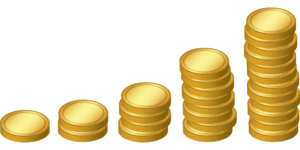Detailsalget i USA overgår alle forventninger. Det er næsten dobbelt så stort som alle ventede i første kvartal, og det er langt større end før pandemien. Det fordobler også vækstraten i første kvartal. Men detailsalget udgør dog kun halvdelen af forbruget, og der er dele af økonomien, der stadig ligger stærkt underdrejet. Derfor skal de pæne tal tages med et gran salt.
US recovery increasingly front-loaded
US Macro: Easing restrictions and stimulus payments drive consumption surge –
Retail sales jumped by 9.8% m/m in March, almost double the pace of our (5.0%) and consensus (5.8%) forecasts. The stunning outturn means that overall retail sales are a massive 17.1% above pre-pandemic levels, while the cumulative gains since last June have now completely eclipsed the shortfalls of the lockdown period last year; and this is coming despite some shortfalls remaining in specific categories.
The strength was visible across the board, but particularly evident in eating out, autos, and clothing – which all grew at a double-digit pace. Some of this strength (particularly in eating out and clothing categories) was to be expected given the continued easing of pandemic restrictions, however the strength in autos, as well as online sales (which are now 35% above pre-pandemic levels) suggests that the $1400 stimulus payments of last month have also played a role in the surge.
Indeed, although surveys show the payments are having progressively diminishing returns to the economy – with around 25% of respondents saying they would spend the March payments (as opposed to save or pay off debt), compared with 29% last June – this still represents a significant, albeit temporary, growth impulse.
We raise our Q1 growth forecast, but the recovery still has room to run – The dramatic strength in consumption in March points to the recovery becoming increasingly front-loaded.
On the back of today’s numbers – alongside other indicators suggesting a more rapid recovery – we have raised our Q1 growth forecast to 8.6% annualised from 4.5% previously, and we see upside risks to our 2021 growth forecast of 5.8%.
With that said, the surprising speed of the recovery poses some key questions – in particular on how much of the current consumption boom is making up for past weakness, how much represents a normalisation, and whether some of this strength might be ‘stealing’ from future consumption.
We definitely see scope for payback in certain categories over the coming months, such as autos, which have now fully made up for the pandemic shortfall. Online sales and home improvement could also correct in the near term, as more of the economy reopens and the substitution we have seen from services to goods goes into reverse.
However, it should be noted that retail sales represent less than half of US private consumption, and that there are still significant categories of consumption that remain depressed compared to the pre-pandemic trend – such as air travel and domestic tourism, and visits to cultural/sports venues and events. As more restrictions are eased, the recovery in these types of categories is likely to take over as the key driver of consumption growth as Q2 progresses.











